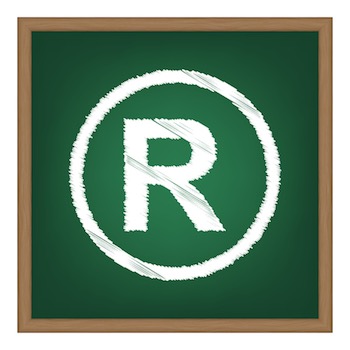 Trademarks are a universal phenomenon. Virtually all legal systems around the world recognize some form of identification of the source and quality of goods. Trademarks have been in existence for almost as long as trade itself, with identification symbols that today we would call trademarks dating 4000 years. In free market economies, trademarks are legally recognized and protected as an inherent feature of the marketplace and of consumer protection.
Trademarks are a universal phenomenon. Virtually all legal systems around the world recognize some form of identification of the source and quality of goods. Trademarks have been in existence for almost as long as trade itself, with identification symbols that today we would call trademarks dating 4000 years. In free market economies, trademarks are legally recognized and protected as an inherent feature of the marketplace and of consumer protection.
From an economic point of view, a trademark is just a symbol that allows a purchaser to identify goods or services that have been acceptable in the past and reject goods or services that have failed to live up to the desired standards, which will vary from consumer to consumer.
Trademarks differ from copyrights, which protect original artistic or literary works, and patents, which protect inventions. A trademark primarily protects names, logos or symbols that identify a particular creator of goods or provider of services. More specifically, a trademark is a word, phrase, symbol or design, or a combination of words, phrases, symbols or designs, that identifies and distinguishes the source of the goods of one party from those of others. A service mark is the same as a trademark, except that it identifies and distinguishes the source of a service rather than a product. In most instances the term “trademark” is simply used to refer to what the law calls either a trademark or a service mark, so do not be surprised if you see a service mark (an example would be Roto Rooter) simply referred to as a trademark by judges, lawyers and business people.
You do not need to file any document or application to have at least some trademark rights, although it is highly advisable to obtain trademark protection and not rely on the common law approach of simply using a trademark. Still, it is true to say that trademark rights, albeit relatively weak rights, can be established simply based on legitimate use of a trademark alone. Having said this, owning a United States federal trademark registration has significant advantages and really should not be considered optional. Some of the more important advantages of a federal trademark registration include:
- constructive notice to the public of the registrant’s claim of ownership of the mark;
- a legal presumption of the registrant’s ownership of the mark and of the registrant’s exclusive right to use the mark nationwide on or in connection with the goods and/or services listed in the registration;
- the use of the U.S registration as a basis to obtain registration in foreign countries; and
- the ability to file the U.S. registration with the U.S. Customs Service to prevent importation of infringing foreign goods.
You do not need to have a federal trademark in order to bring a federal lawsuit under 15 U.S.C. 1125(a), but having a federally registered trademark makes the case much stronger. Indeed, one of the factors considered by the courts when weighing evidence in a lawsuit based on 1125(a) is whether a federal trademark registration exists. Technically, a trademark lawsuit based on 1125(a) is not truly a trademark infringement lawsuit, but rather one based on the existence of a likelihood of confusion, which is a form of an unfair business practice. In a trademark infringement lawsuit you are alleging another is using your trademark, which happens but is not as common as someone using something that is quite similar, but not identically the same. In the case where someone is using a similar but not identical trademark any federal action would be brought pursuant to 1125(a). Thus, even if your claim is not specifically a trademark infringement matter there is significant advantage to having a federally registered trademark.
Any time you claim rights in a mark, you may use the “TM” (trademark) or “SM” (service mark) designation to alert the public to your claim, regardless of whether you have filed an application with the USPTO. However, you may use the federal registration symbol “®” only after the United States Patent and Trademark Office has actually registered a trademark, and not while an application is pending. Also, you may use the registration symbol with the mark only on or in connection with the goods and/or services listed in the federal trademark registration.
Obviously, this is intended only as a quick primer on trademarks. For more information on trademark topics, brand building, business and advertising, please see the following articles from IPWatchdog.com:
- Business Owners Need Federal Trademark Rights
- Selecting the Right Trademark for Your Business
- Selecting a Business Name in a Social Media Crazy World
- The Perils of Being Your Own Trademark Attorney
- Trademark Process: Obtaining and Keeping a U.S. Trademark
- Brand Identity: Protecting Against Negative Good Will
- Trademark Power: Not All Trademarks Are Created Equal
- Trademarks Create Valuable Assets

![[IPWatchdog Logo]](https://ipwatchdog.com/wp-content/themes/IPWatchdog%20-%202023/assets/images/temp/logo-small@2x.png)

![[Advertisement]](https://ipwatchdog.com/wp-content/uploads/2024/03/IP-Copilot-Apr-16-2024-sidebar-700x500-scaled-1.jpeg)
![[Advertisement]](https://ipwatchdog.com/wp-content/uploads/2024/04/Patent-Litigation-Masters-2024-sidebar-early-bird-ends-Apr-21-last-chance-700x500-1.jpg)

![[Advertisement]](https://ipwatchdog.com/wp-content/uploads/2021/12/WEBINAR-336-x-280-px.png)
![[Advertisement]](https://ipwatchdog.com/wp-content/uploads/2021/12/2021-Patent-Practice-on-Demand-recorded-Feb-2021-336-x-280.jpg)
![[Advertisement]](https://ipwatchdog.com/wp-content/uploads/2021/12/Ad-4-The-Invent-Patent-System™.png)







Join the Discussion
No comments yet.